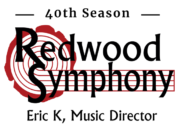Joaquin Rodrigo
Concierto de Aranjuéz
The music of Joaquin Rodrigo is steeped in the music and culture of his native Spain, from Baroque music of the early Spanish church to folk melodies and traditional Spanish folk instruments, especially the guitar. Born in Sagunto, Valencia, in 1901, Rodrigo was blinded at the age of three by diphtheria, which he said turned him early to a life of music. A talented pianist as well as composer, he transcribed many of his orchestral works for one or two pianos. He had a definite flair for the concerto form, over the years writing works for various soloists including guitarist Andrés Segovia, flutist James Galway, harpist Nicanor Zabaleta, and cellist Julian Lloyd Webber.
He won honors early for his 1924 work, Cinco piezas infantiles, as a young music student at the Conservatoire in Valencia. He went on to study in Paris with Paul Dukas at the École Normale de Musique, also receiving encouragement from his fellow countryman, composer Manuel de Falla. The outbreak of the Spanish Civil War in the late 1930s caused him to lose his Paris scholarship; he and his wife, pianist Victoria Kamhi, barely made ends meet teaching music and Spanish in France and Germany. But in 1939 they were able to return to Spain, and in 1940 Rodrigo’s Concierto de Aranjuez premiered in Barcelona with guitarist Regino Sainz de la Maza. It was a rousing success and brought Rodrigo international fame. It became the most popular 20th-century concerto ever written, being arranged for many other solo instruments; the theme of the second movement was also famously adapted by Miles Davis in his Sketches of Spain album in 1960, his version in turn becoming a jazz standard. In 1992, in honor of Rodrigo’s 90th birthday, King Juan Carlos I of Spain awarded him the hereditary title Marqués de los jardines de Aranjuez (Marquis of the gardens of Aranjuez).
The 300-acre gardens of Aranjuez are part of an 18th-century summer palace of the Bourbon kings of Spain, on the banks of the Tajo river outside Madrid. Rodrigo described his concerto as capturing “the fragrance of magnolias, the singing of birds and the gushing of fountains” — in short, the beauties that a blind man such as he could appreciate. In its Baroque form the work matches the formality of the old palace. But the dances of the first and last movement and the plaintive melody of the second have their roots in older, more primal Spanish folk forms, making the work a brilliant fusion of quintessentially Spanish style and Rodrigo’s gift for melody.
The opening movement, Allegro con spirito, is based on traditional dances such as the fandango. It is built on a series of alternations: the traditional alternation between the solo instrument and the orchestra, a thematic alternation between the strummed chords of the guitar and the melody introduced by the violins, and a rhythmic alternation between the written time signature of 6/8 and frequent passages in 3/4. The opening demonstrates Rodrigo’s ability to balance the quieter guitar against a full orchestra. The guitar enters with a strummed passage, joined by agile counterpoint from the woodwinds that never overpowers the soloist, then the strings enter with quickly bowed chords sounding for all the world like a giant guitar. The solo guitar uses techniques from flamenco, as well as contrasting punteado (picked ornamentation in flying scale passages) with rasgueados (strumming). The movement climaxes with a brisk fandango segment complete with lively brass, then the guitar quiets the piece to a gentle close.
Gentleness becomes longing in the Adagio. The guitar strums quietly while the English horn plays a plaintive melody inspired by the saeta, an Andalusian lament sung during Holy Week. This lament was sung by a few women as a religious statue was carried through the streets, and their cry would be picked up by the crowd. In this case, the guitar and English horn pass the theme back and forth, and eventually the entire orchestra takes it up, mimicking the keening of the crowds. The lamenting theme has a heartfelt quality inspired, according to a friend of Rodrigo’s, not only by the saeta but in response to the death of the composer’s infant son. Although an extended cadenza by the guitar leads the orchestra to a passionate climax, the movement ends quietly and reflectively.
The final movement, Allegro gentile, is a clever combination of Baroque-sounding counterpoint and dancing, folk-like melodies. As in the first movement, this one juxtaposes two time signatures, in this instance 2/4 and 3/4. Various solo instruments and groups pass the final theme back and forth, and after a final grand presentation, the movement and work end delicately, in keeping with Rodrigo’s suggestion that the concerto “should only be as strong as a butterfly … a suggestion of times past.”
November 11, 2003
